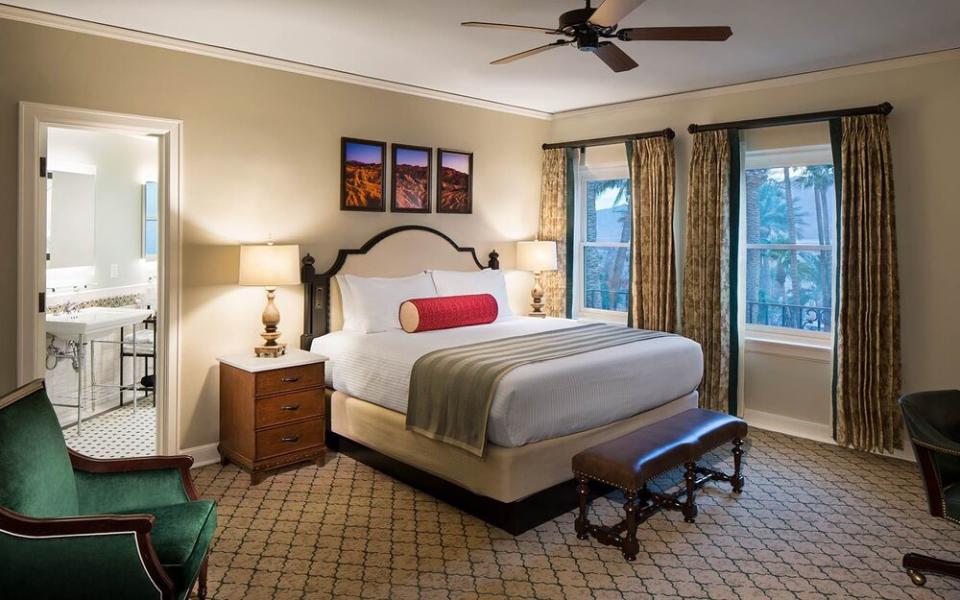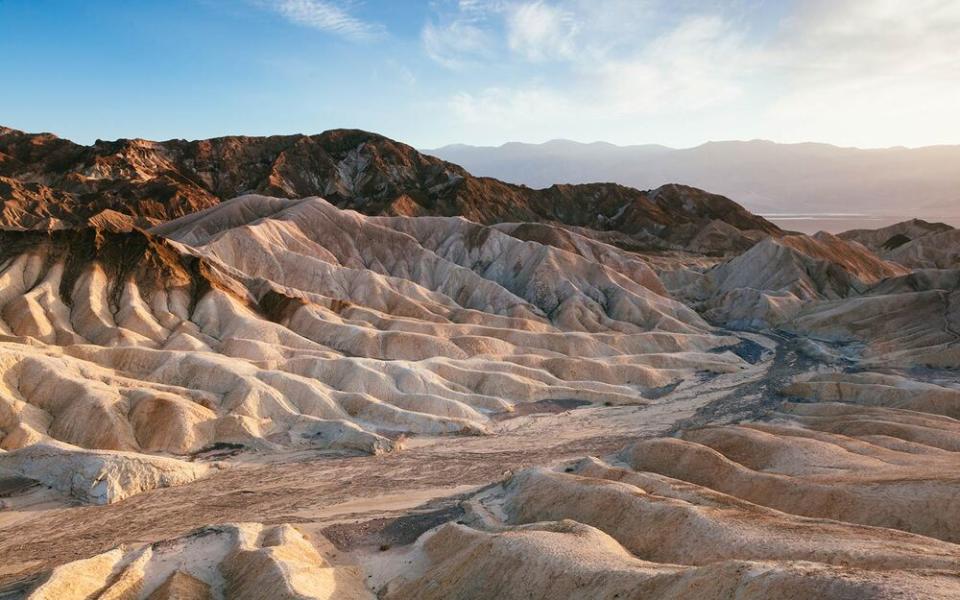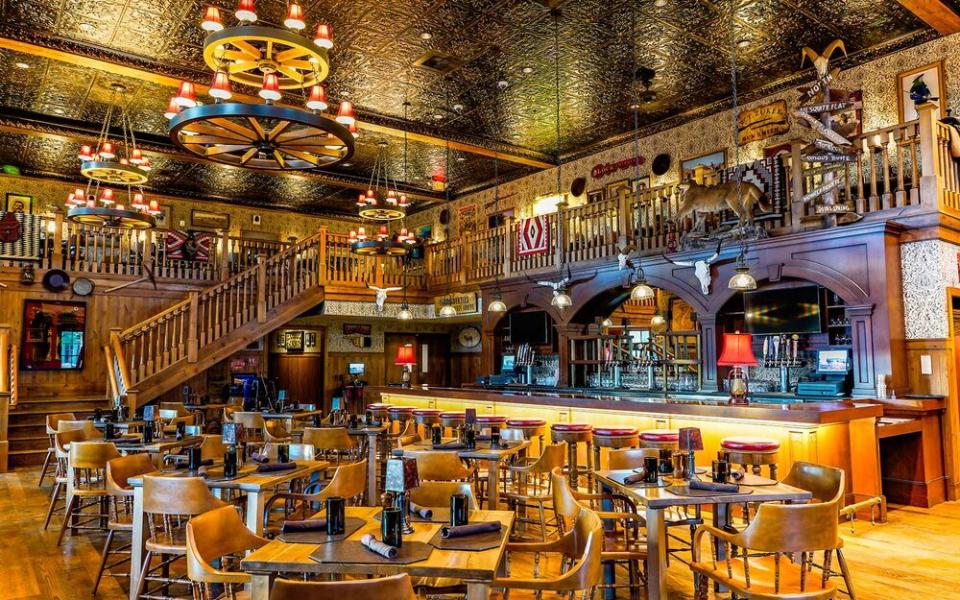The Oasis at Death Valley National Park Hotel
If you’ve never been to Death Valley, the name probably conjures up images of an unforgiving sand-strewn landscape that’s arid and lifeless. And while there are definitely parts of the 3.4 million-acre national park in central California that fit that description, it’s also home to an oasis where 80,000 gallons of water rise to the surface every day.
The flooding leaves vast deposits of borax, a mineral sometimes known as “white gold.” Although its discovery has been traced back to Tibet in the 8th century, borax became popular in the 19th century, when it was widely used in ceramics and gold mining. It also touted as a cure-all for everything from dandruff to epilepsy. In the late 1800s, bountiful deposits were discovered in Nevada, and later, in Death Valley (long before it became a national park). Harmony Works — later known as the Pacific Coast Borax Company — bought up thousands of acres of land to mine in the inhospitable terrain and built multiple railroads to transfer the lucrative mineral out of Death Valley.
But by 1926 another deposit had been discovered in the much-more accessible Mojave Desert, leading the Borax Company abandoned their mines in Death Valley. Railroad manager Frank Jenifer had the idea to build a hotel on the property to continue to make use of the rail lines that could transport guests to a desert inn.
Opened in 1927 with ten rooms, the Inn at Death Valley quickly became popular with Hollywood celebrities like Clark Gable and later George Lucas, who filmed the original Star Wars movies in Death Valley. The Inn expanded with more rooms, a spring-fed pool, tennis courts, and a golf course (the world’s lowest at 214 feet below sea level). It eventually added the more casual Ranch across the road, turning the hideaway into a full-fledged resort stretching across a total of 341 acres.

“The Borax Company had a dream and despite the skepticism of most everyone outside the company, their vision of drawing visitors to this enchanted and mystical land was fulfilled,” says David Woodruff, a retired longtime employee and the resort’s unofficial historian. “The number of tourists visiting the Inn increased every year, even through the Great Depression.” One potential explanation for that continued growth, despite challenging economic times: In 1933, President Herbet Hoover designated Death Valley as a national monument, which recognized the region’s cultural, historical, and scientific value.
Over the time, the inn became dated and the property’s hot springs were under-utilized. But thanks to a recent $100 million facelift, it has been reborn into the destination-worthy Oasis at Death Valley. The resort is the ideal jumping off point to explore some of the national park’s best attractions, like sunrise at Zabriskie Point, sunset at the Artists Palette, walking the salt flats at Badwater Basin, taking in Dante’s View, or catching the spring’s wildflower bloom. Just don’t go in summer, when temperatures often soar upwards of 100 degrees.

The renovated property, which is now privately owned by Xanterra Travel Collection, features 66 mission-style updated rooms and a refreshed lobby, restaurant, and cocktail lounge. Don’t miss the new, two-treatment room Tranquility Spa — there’s nothing like an invigorating massage after a day spent in a place called Death Valley — adjacent to the spring-fed pool that is now bordered by a new pool café (order the date shake, which uses fruit grown on property) and chic cabanas. Best of all, 22 stylish one-bedroom casitas have been added, perfect for families or small groups looking for privacy and a little more space.

Just across the road, the Ranch at Death Valley also underwent extensive renovations, including mission-style town square complete with a courtyard holding relics from the Borax age. There’s also a new retail shop and refreshed food and beverage facilities, including an ice cream counter and saloon. The latter is filled with hundreds of Old West artifacts, historic posters and photographs, antique firearms and ranching tools, taxidermied game animals, vintage Western clothing and accessories, and Western-themed paintings, with many pieces coming from Xanterra owner Philip Anschutz’s personal collection.
%image1
Order a drink from the cheerful barkeep and peruse the saloon’s walls; there’s no better way to end a long day spent discovering the hidden gems of Death Valley, which, as it turns out, isn’t so inhospitable after all.

